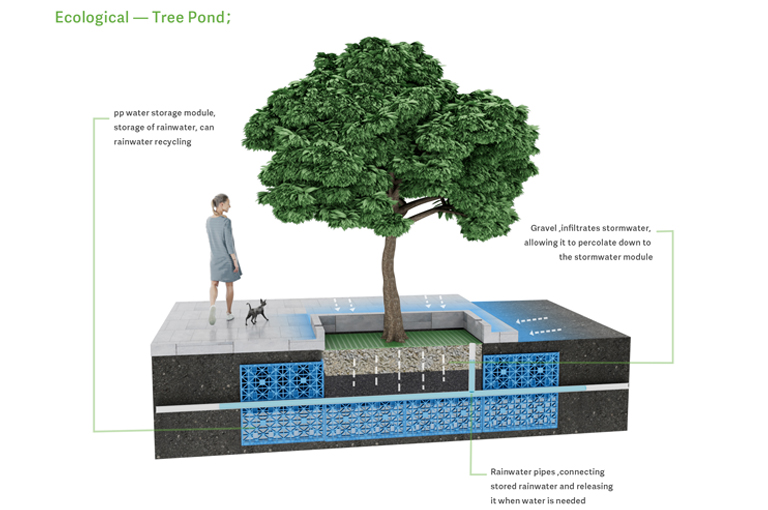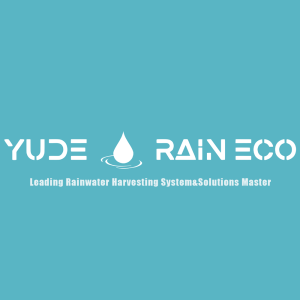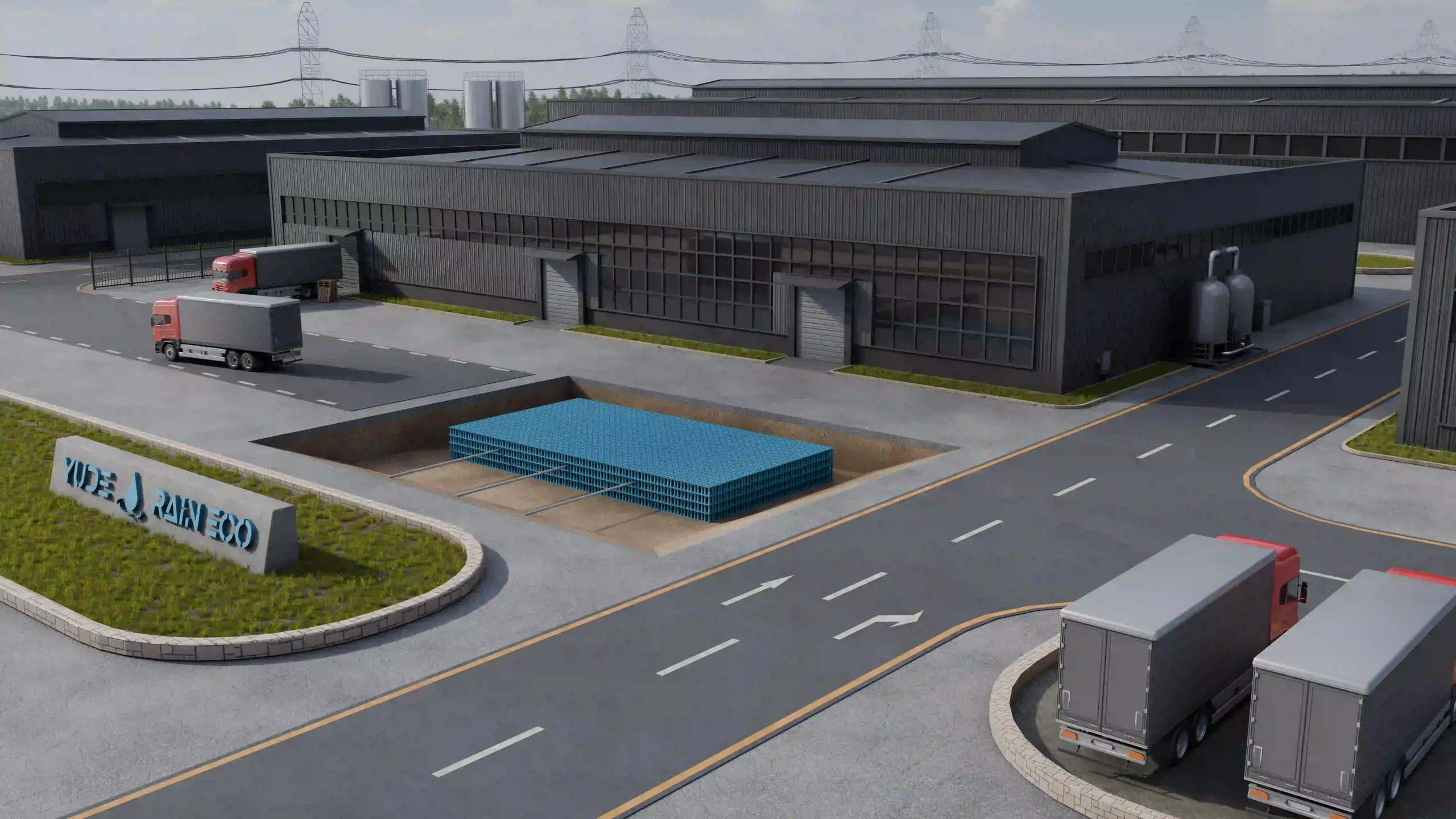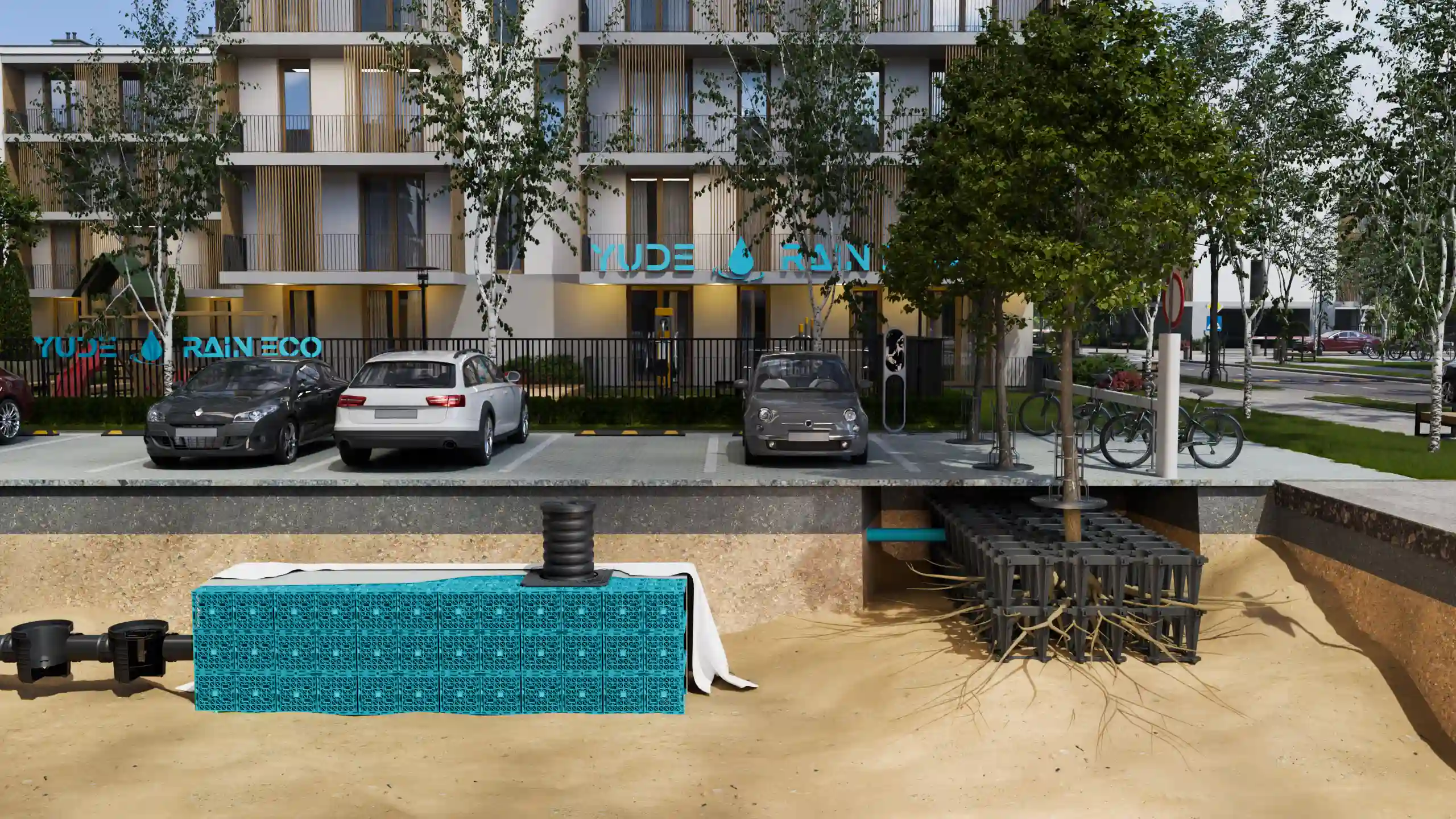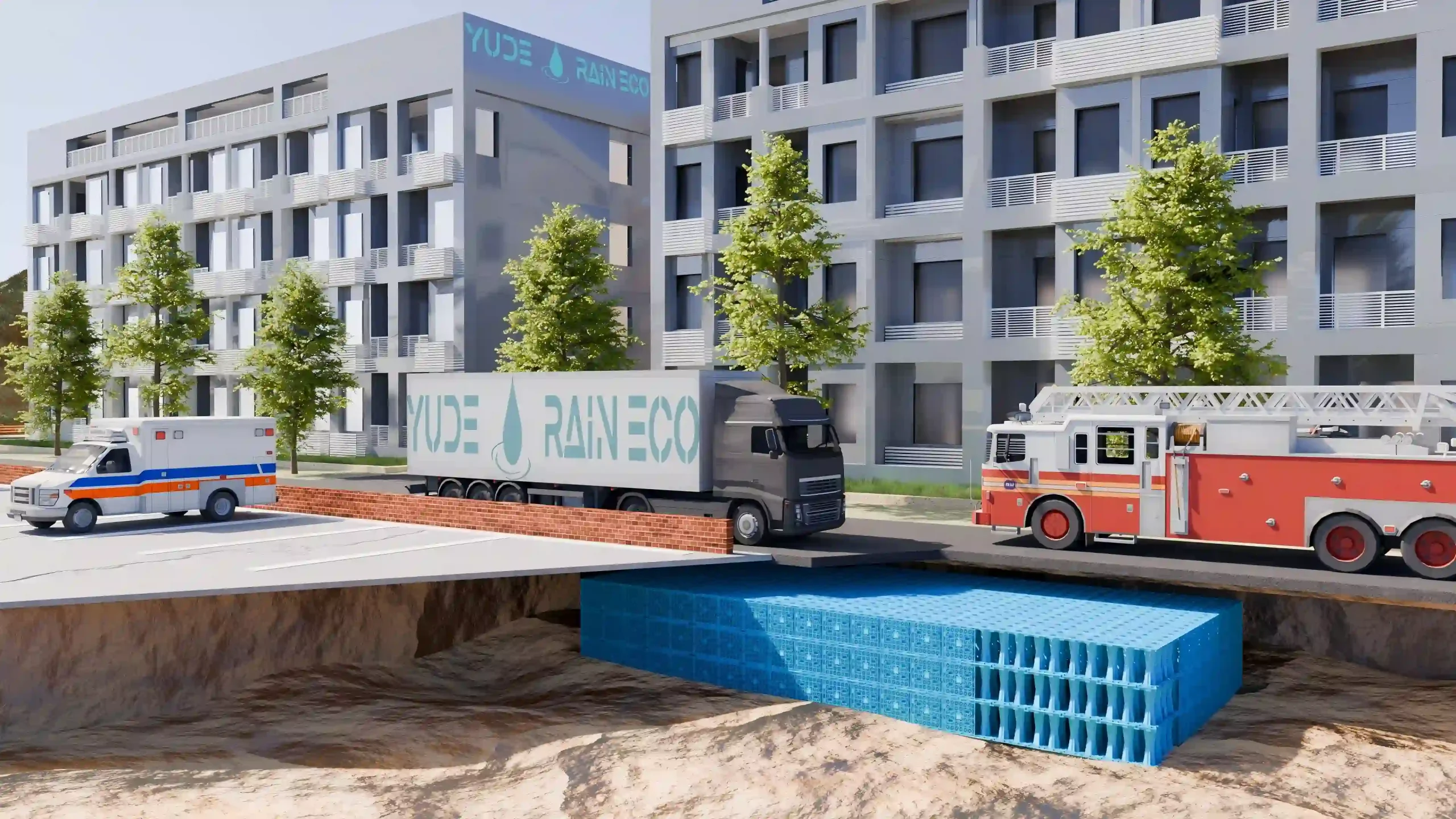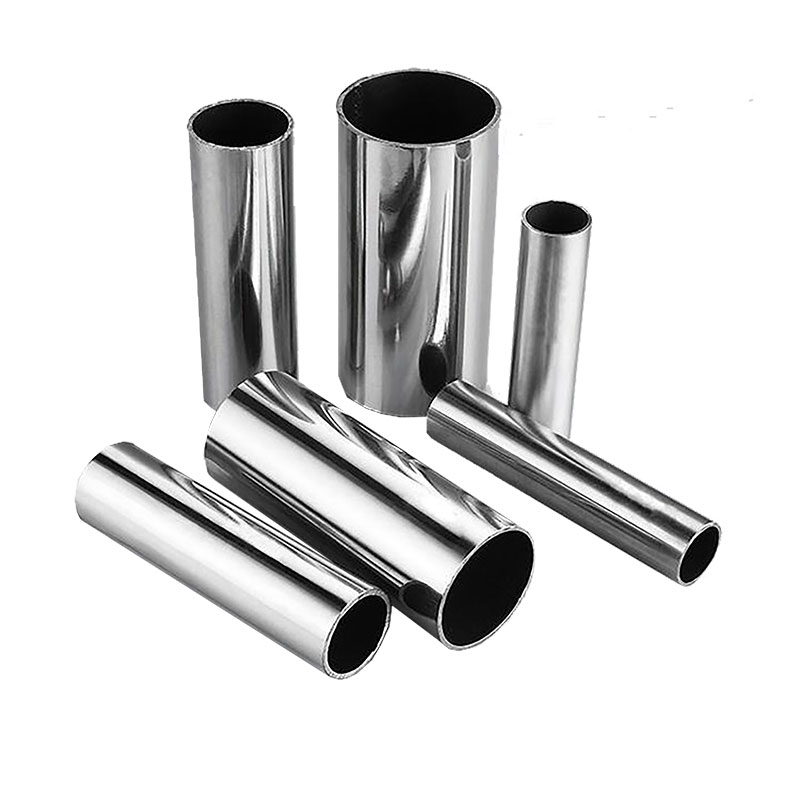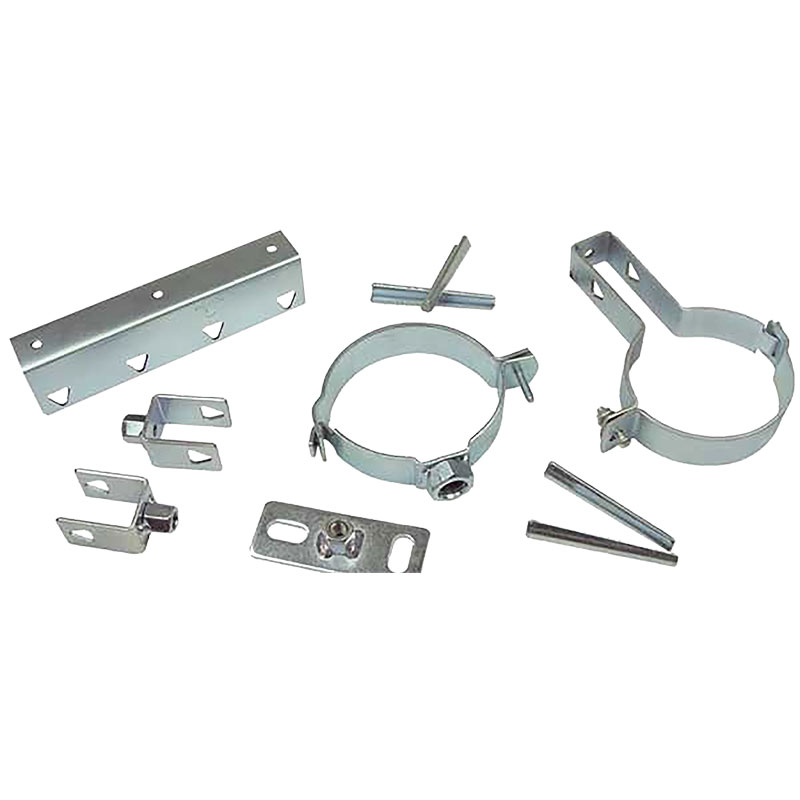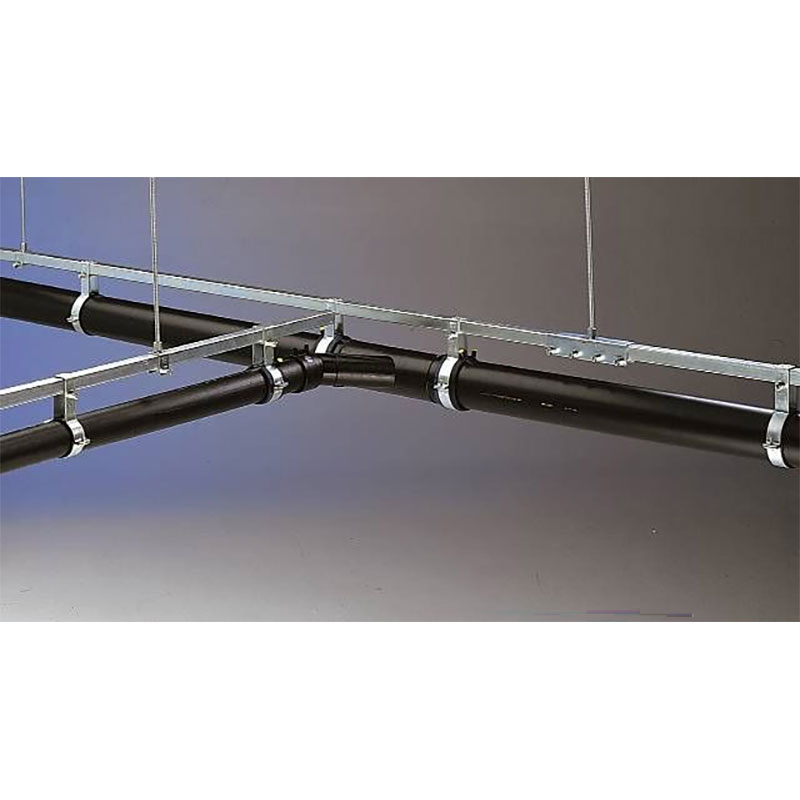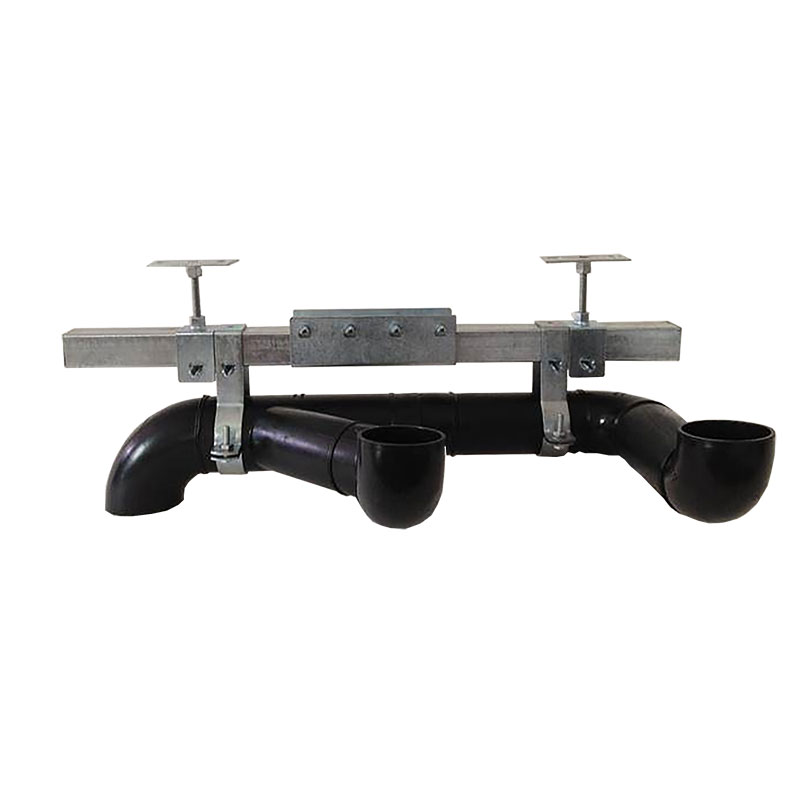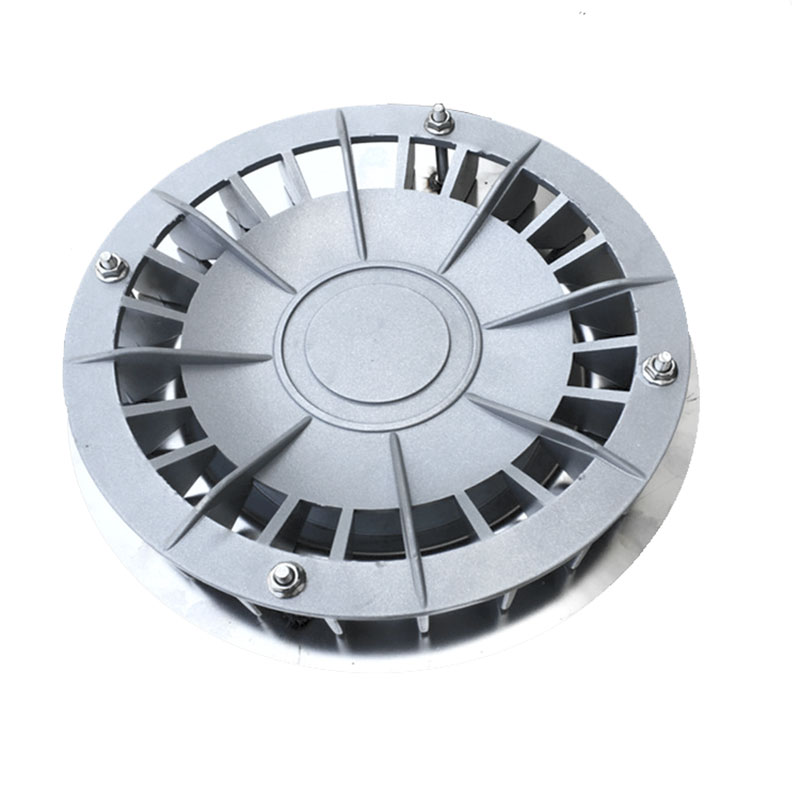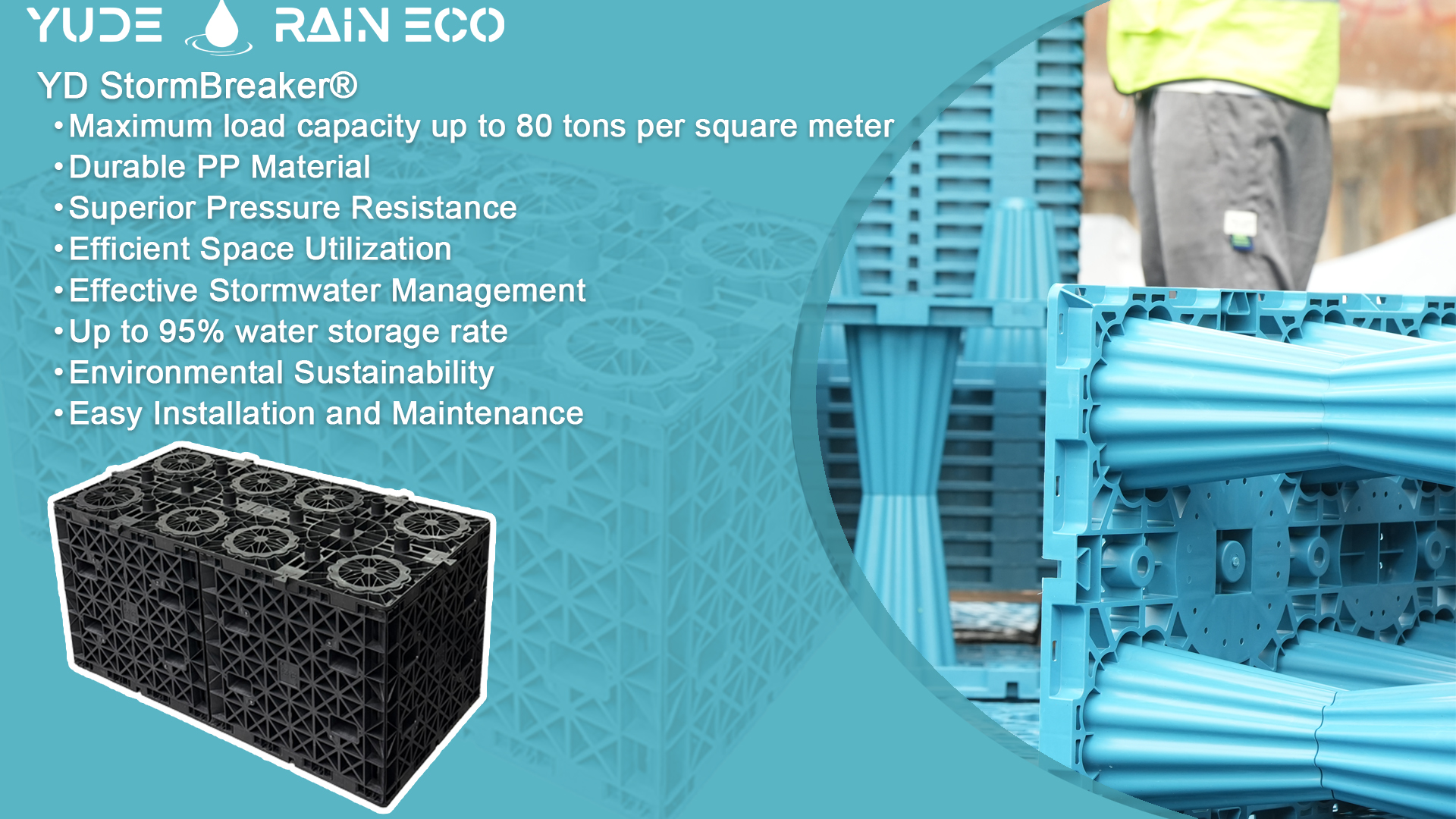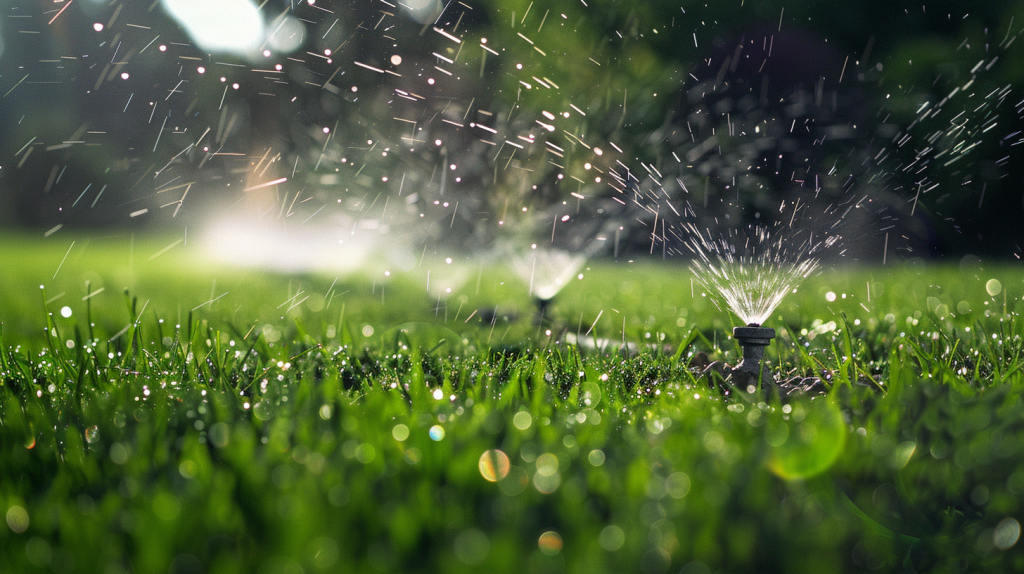As cities continue to urbanize at a rapid pace, the impacts of climate change—especially extreme heat and flooding—have intensified. Urban heat islands (UHIs) magnify the effects of heatwaves, while traditional impervious surfaces worsen stormwater rCombating Urban Heat and Flooding with Nature-Based Solutionsunoff. Ecological Tree Pit Systems, also known as eco-tree pools or green tree trenches, offer a nature-based solution to these interconnected urban challenges. By integrating trees, soil engineering, and sustainable drainage technologies, these systems promote healthier cities, restore environmental balance, and increase urban resilience.
What is an Ecological Tree Pit System? What are the Components?
What Is an Ecological Tree Pit System?
An Ecological Tree Pit System is a multifunctional urban infrastructure component that combines tree planting with stormwater management. It is engineered not just for vegetation support, but also for urban flood mitigation, pollution filtration, and microclimate improvement.
Core Components of an Eco-Tree Pool
- Tree and Root Zone
- Urban Tree: Provides shade, carbon sequestration, and visual appeal.
- Root Space: Designed to support healthy root development, often using soil cells or structural vaults to prevent compaction.
- Engineered Soil Profile
- Structural Soil: A load-bearing soil blend that promotes root growth under paved surfaces.
- Filter Media: Granular mixes (sand, compost, biochar) that trap heavy metals, nutrients, and suspended solids.
- Surface Infiltration Layer
- Permeable Pavers or Tree Grates: Allow stormwater to infiltrate into the root zone.
- Rain Gardens or Planters: Optionally integrated to increase surface green cover and absorption.
- Stormwater Storage and Drainage
- Infiltration Chambers: Void spaces beneath the tree pit store water temporarily.
- Drainage Pipes & Overflow Outlets: Prevent flooding and direct excess flow to underground tanks or municipal drains.
- Irrigation and Water Reuse
- Passive Irrigation: Captures and stores stormwater for tree irrigation.
- Active Irrigation: Smart systems monitor soil moisture and deliver supplementary water as needed.
- Protective and Functional Structures
- Tree Guards and Grates: Protect young trees from urban stressors.
- Mulch Layer: Conserves soil moisture and moderates root temperature.
- Monitoring and Maintenance Infrastructure
- Inspection Ports and Access Hatches: Enable routine checks, cleaning, and performance verification.
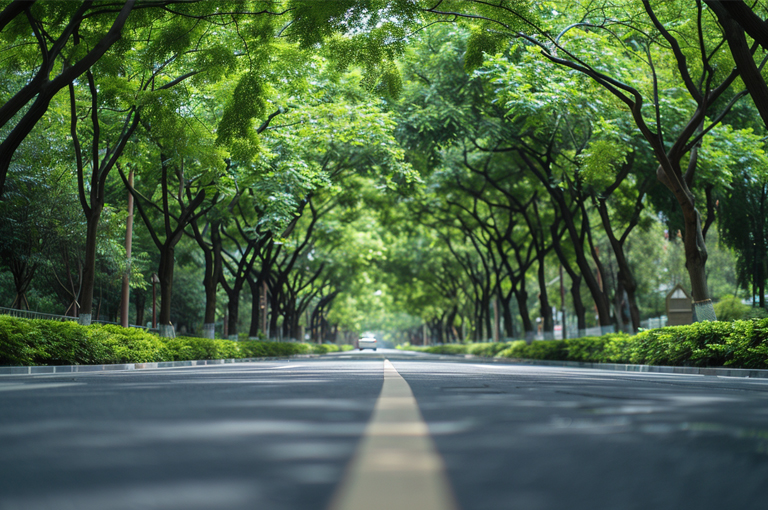
Why Are Ecological Tree Pit Systems Important?
1. Advanced Stormwater Management
- Flood Prevention: Eco-tree pits detain and infiltrate stormwater at the source, reducing peak runoff and stress on city drainage systems.
- Water Quality Enhancement: Filter media improve runoff quality by trapping pollutants, sediments, and hydrocarbons before water enters rivers or sewers.
2. Urban Environmental Benefits
- Air Quality Improvement: Trees capture airborne particulates (PM2.5), nitrogen oxides, and carbon monoxide, improving urban air quality.
- Temperature Regulation: Shade from trees and evaporative cooling from evapotranspiration lower surrounding air and surface temperatures by up to 5–10°C.
- Biodiversity Habitat: Tree pits create ecological niches for birds, insects, and microorganisms.
3. Social and Public Health Advantages
- Urban Livability: Green infrastructure increases public satisfaction, promotes walkability, and improves neighborhood aesthetics.
- Mental Health: Green views and tree-lined streets are associated with reduced anxiety, stress, and depression.
- Physical Activity: Shaded walkways and cooler environments encourage walking, jogging, and cycling.
4. Sustainability and Climate Resilience
- Carbon Sequestration: Mature trees absorb up to 20–50 kg of CO₂ annually.
- Adaptation to Extreme Weather: By slowing, storing, and infiltrating rainwater, tree pits reduce the risk of infrastructure damage during storm events.
- Urban Cooling Infrastructure: Function as decentralized cooling systems that reduce reliance on air conditioning.
5. Water Conservation and Groundwater Recharge
- Efficient Use of Rainfall: Passive irrigation reduces potable water use for landscaping.
- Subsurface Infiltration: Tree pits recharge aquifers and support sustainable urban hydrology.
Mitigating Urban Heat Island (UHI) Effect Through Tree Infrastructure
1. Canopy Cooling and Shade
Urban tree canopies reduce surface temperatures by blocking direct sunlight and decreasing pavement heat absorption. This contributes to more walkable, safer streets and lower urban cooling demand.
2. Evapotranspiration Effects
Tree transpiration absorbs heat from the air, creating a localized cooling effect. This mechanism is particularly effective when combined with permeable soils and sufficient water availability.
3. Low-Albedo Surface Replacement
The natural materials in tree pits (e.g., mulch, soil) have a lower heat absorption index than asphalt, reducing daytime heating and nighttime heat retention.
4. Microclimate Stabilization
The combination of shading, humidity retention, and reduced wind speeds around vegetated areas creates more comfortable urban microclimates.
Where Ecological Tree Pit Systems Are Most Effective
Ideal Environmental Conditions
- High Population Density: Eco-tree pits are suited for compact, high-rise cities with minimal green space.
- Extensive Impervious Surfaces: Cities with heavy paving (streets, plazas) gain stormwater and cooling benefits.
- Air Quality Challenges: Regions with high pollution levels benefit from vegetative filtration.
- Limited Water Supply: Passive irrigation reduces reliance on mains water, particularly in arid areas.
Application by Climate Zone
- Tropical Cities (e.g., Jakarta, Manila): Combat intense rainfall and urban flooding.
- Temperate Zones (e.g., London, Tokyo): Enhance seasonal cooling and groundwater recharge.
- Arid Climates (e.g., Cairo, Phoenix): Maximize scarce water reuse and increase shaded surfaces.
Countries and Regions:
| Region | Country | Cities |
|---|---|---|
| North America | United States | Cities like New York, Chicago, and Los Angeles, where urban heat island effect and stormwater management are major concerns. |
| North America | Canada | Urban centers such as Toronto and Vancouver benefit from ecological tree pools for managing rainfall and enhancing urban green spaces. |
| Europe | Western Europe | Cities like London, Paris, and Berlin, which have dense urban areas and need effective stormwater management solutions. |
| Europe | Southern Europe | Cities such as Rome and Athens, where high summer temperatures and limited green spaces make tree pools particularly beneficial. |
| Asia | East Asia | Urban centers like Tokyo, Seoul, and Beijing, where high population density and air pollution are significant issues. |
| Asia | Southeast Asia | Cities such as Singapore, Jakarta, and Bangkok, where heavy rainfall and urban flooding are common problems. |
| Australia and New Zealand | Australia | Cities like Sydney and Melbourne, which face challenges related to urban heat and water conservation. |
| Australia and New Zealand | New Zealand | Urban areas such as Auckland and Wellington benefit from enhanced stormwater management and green infrastructure. |
| Latin America | Brazil | Cities like São Paulo and Rio de Janeiro, where rapid urbanization has led to increased flooding and heat island effects. |
| Latin America | Mexico | Urban centers such as Mexico City, which faces significant air pollution and stormwater management challenges. |
| Africa | South Africa | Cities like Johannesburg and Cape Town, where managing water resources and urban heat are critical issues. |
| Africa | Northern Africa | Urban areas like Cairo, where reducing heat and managing limited water resources are essential. |
Why Choose Yude Rain Eco?
Yude Rain Eco specialize in next-generation stormwater management solutions that are both climate-resilient and eco-efficient. Our team integrates design innovation, modular product systems, and global expertise to deliver tailored results across urban, commercial, and ecological infrastructure projects.
Our Commitment:
- Sustainable Engineering: We embed sustainability principles into every system—ensuring longevity, low maintenance, and positive environmental outcomes.
- Modular Innovation: Our solutions adapt to changing land use and site-specific conditions, offering flexibility during planning and post-installation.
- Global Standards: All Yude products meet or exceed regional compliance standards for load-bearing, water quality, infiltration, and flood mitigation.
- End-to-End Support: From site analysis to installation and post-project monitoring, we offer comprehensive technical and operational support.
Introducing YD StormVault®: Engineered for Green Infrastructure
YD StormVault® is Yude Rain Eco’s flagship ecological tree root system designed specifically for stormwater control, root development, and urban resilience. It forms the underground foundation of our tree pit systems and is ideal for integration into Sustainable Urban Drainage Systems (SuDS).
Key Features:
- Root-Friendly Design: Optimized structural vaults that allow unrestricted tree root growth while supporting pavement loads.
- Stormwater Infiltration Capacity: Modular crates store and gradually release stormwater into the surrounding soil, reducing runoff and promoting groundwater recharge.
- Load-Bearing Performance: Rated up to 60 tons for installation under sidewalks, plazas, and light-traffic roads.
- Durable Material: Constructed from recycled polypropylene with high resistance to soil acids, salt, and microbial decay.
- Scalable Modularity: Easily adapted to different tree sizes, site footprints, and hydraulic requirements.
Applications:
- Green streets and transit corridors
- Commercial plazas and public squares
- School campuses and institutional parks
- Industrial parks with green infrastructure goals
YD StormVault® not only supports healthier tree growth—it transforms the urban underground into a functional, resilient, and sustainable layer of green infrastructure.
Partner with Yude Rain Eco to design tree infrastructure that cools, cleans, and sustains our cities.
Greener Cities Start with Smarter Tree Infrastructure
Ecological Tree Pit Systems are more than landscape elements—they are foundational to climate-adaptive cities. They unify hydrology, urban forestry, and environmental engineering into a single, scalable solution. With decades of global success and measurable benefits, these systems are central to the future of resilient, human-centered urban design.
Yude Rain Eco provides turnkey ecological tree pit solutions tailored for municipalities, developers, and urban planners. Our integrated systems not only support sustainable stormwater practices but also help cities meet carbon targets, increase green space, and enhance public well-being.
Partner with Yude Rain Eco to design tree infrastructure that cools, cleans, and sustains our cities.
Contact us today for a consultation or project proposal.
Yude Rain Eco – Building Cooler, Greener, and More Resilient Cities.

